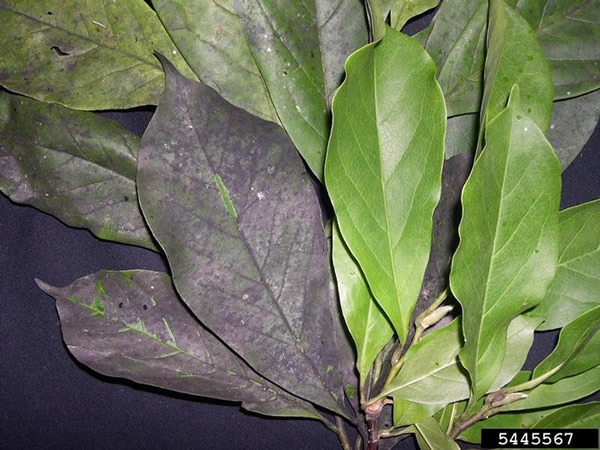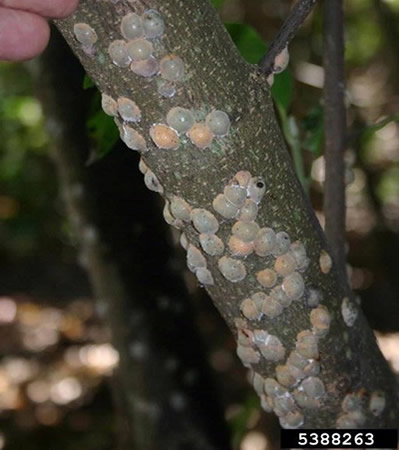Issue 9, August 24, 2020
Magnolia Scale
Magnolia scale (Neolecanium carnuparvum) is a pest of magnolia, including star, cucumbertree, saucer and lily magnolias in northern and central Illinois. This insect can produce a large amount of honeydew, making leaves and branches shiny and sticky. The honeydew can promote sooty mold growth on the affected area, turning leaves and branches dark gray or black. If large populations of scales are present, honeydew can also coat lawn furniture or cars below the magnolia tree causing additional nuisance.


Sooty mold on magnolia, Sarah Vanek, Bugwood.org (Left), Magnolia Scale (Neolecanium carnuparvum), William Fountain, University of Kentucky, Bugwood.org (Right)
The female scales can be easily identified because they are among the largest scales in Illinois, growing up to ½ inch in diameter, though many do not reach maximum size. The color of the scales are variable ranging from white or yellow color to light brown or gray. The scales are usually round or slightly oblong. Magnolia scale has one generation per year with adults appearing during the summer. Young crawlers hatch and begin to emerge from beneath the female scales in late summer to early fall. The crawlers grow and feed on the plants for a time, overwinter and begin to feed again in the spring.
Treatments are most effective when applied to young crawlers emerging in late summer to early fall. Inspect the underside of one and two-year-old branches for crawlers. They can be identified as small gray to reddish-brown specks moving on the branches. If crawlers are present, you can treat for magnolia scale. Because magnolia scale overwinters in the crawler stage, there is also an opportunity to treat in the spring, at bud break, if you miss the fall emergence window.
As with other scale species, some of the best treatments are summer oils and insecticidal soaps. Coverage is key to ensuring the crawlers come in contact with the treatments, especially in areas like the undersides of twigs where crawlers are most abundant.
Chemical controls like acephate (Orthene, Lepitect) can be applied as a foliar spray or soil drench. However, neonicotinoid treatments like imidacloprid (Merit, others) and dinotefuran (Safari) are not recommended to treat magnolia scale because they have not shown to consistently control this pest and pose a risk to non-target insects that visit magnolias.
Remember that existing adult scales will remain attached to the tree even if the scale below is dead, so don’t be discouraged if scales are still visible after treatment. Treatment of crawlers prevents additional adult scale from accumulating on the magnolia.
Author:
Sarah Hughson